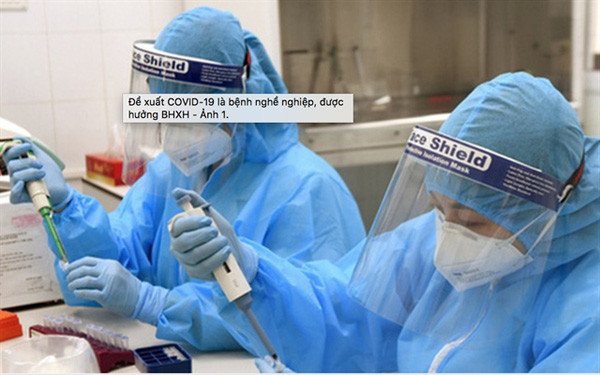almost all curbs.

The draft proposes six groups of occupations with a high risk of SARS-CoV-2 infection as one of the occupational diseases.
The draft regulates that occupational COVID-19 is a disease arising in the working process because employees are exposed to SARS-CoV-2 at work.
According to the guidance on diagnosis and assessment of occupational COVID-19 disease, the occupations and sources of exposure to the SARS-CoV-2 virus include:
- those who work in health establishments.
- those who work in laboratories taking, transporting, handling, preserving and destroying SARS-CoV-2 testing samples.
- those who work in concentrated quarantine facilities, medical isolation at home, medical isolation in pandemic areas, and support COVID-19 patients at home.
- those who work as transporters and caregivers for COVID-19 patients
- those who engage in the transportation, preservation, cremation and burial of COVID-19 victims.
Those who engage in the jobs relating to pandemic prevention include monitors, investigators, diplomats, customs officers, immigration officers, army and police officers, soldiers, civil servants, and others assigned to participate in the pandemic prevention work.
Just one time is the minimum exposure to cause occupational diseases. Workers can contract the disease for up to 28 days after being exposed.
Dossiers of entitlement for those diagnosed with occupational COVID-19 disease must be accompanied by hospital discharge papers, a summary of the medical record of COVID-19, or a positive test result for SARS-CoV by RT-PCR technique or equivalent tests.
According to the draft, workers diagnosed with COVID-19 disease between February 1, 2020, and before the effective date of the circular are entitled to make occupational disease records, undergo assessment, and enjoy benefits as per the current regulations.
According to Dr Nguyen Dinh Trung, head of the Department of Occupational Diseases of the Institute of Occupational and Environmental Health, the proposal to add COVID-19 to the list of occupational diseases for social insurance is essential and urgent.
COVID-19 is currently in group A of infectious diseases, and the risk is at the global pandemic level with many new variants, he said, adding that the transmission rate was very high, especially for frontline forces involved in pandemic prevention and control work.
"When COVID-19 is added to the list of occupational diseases entitled to social insurance, the beneficiaries will feel more secure in their work because their health and life are cared for by the State, so they will not abdicate their duties and will take better care of the people’s health, reducing the death rate from the disease,” said Trung.
Studies show that COVID-19 affects many organs and parts of the body, leaving many undetectable lesions after the patient recovers from the disease.
Post-COVID-19 sequelae can appear within six months of recovery. Effects include fatigue, joint and muscle pain, taste and smell disorder, hair loss, pneumonia, interstitial pneumonia, pulmonary embolism, pulmonary fibrosis lesions, alveolar dilatation, atelectasis lungs, and impaired respiratory function.
The Ministry of Health also regulates the rate of the compensation payment that employers pay for employees at VND4.6 million (US$199).
The number of workers who can benefit from payments for occupational COVID-19 disease is about 20,000, based on recent data. Accordingly, the amount of money that employers must compensate COVID-19 infected employees totals VND92 billion ($3.99 million).
Source: Vietnam News